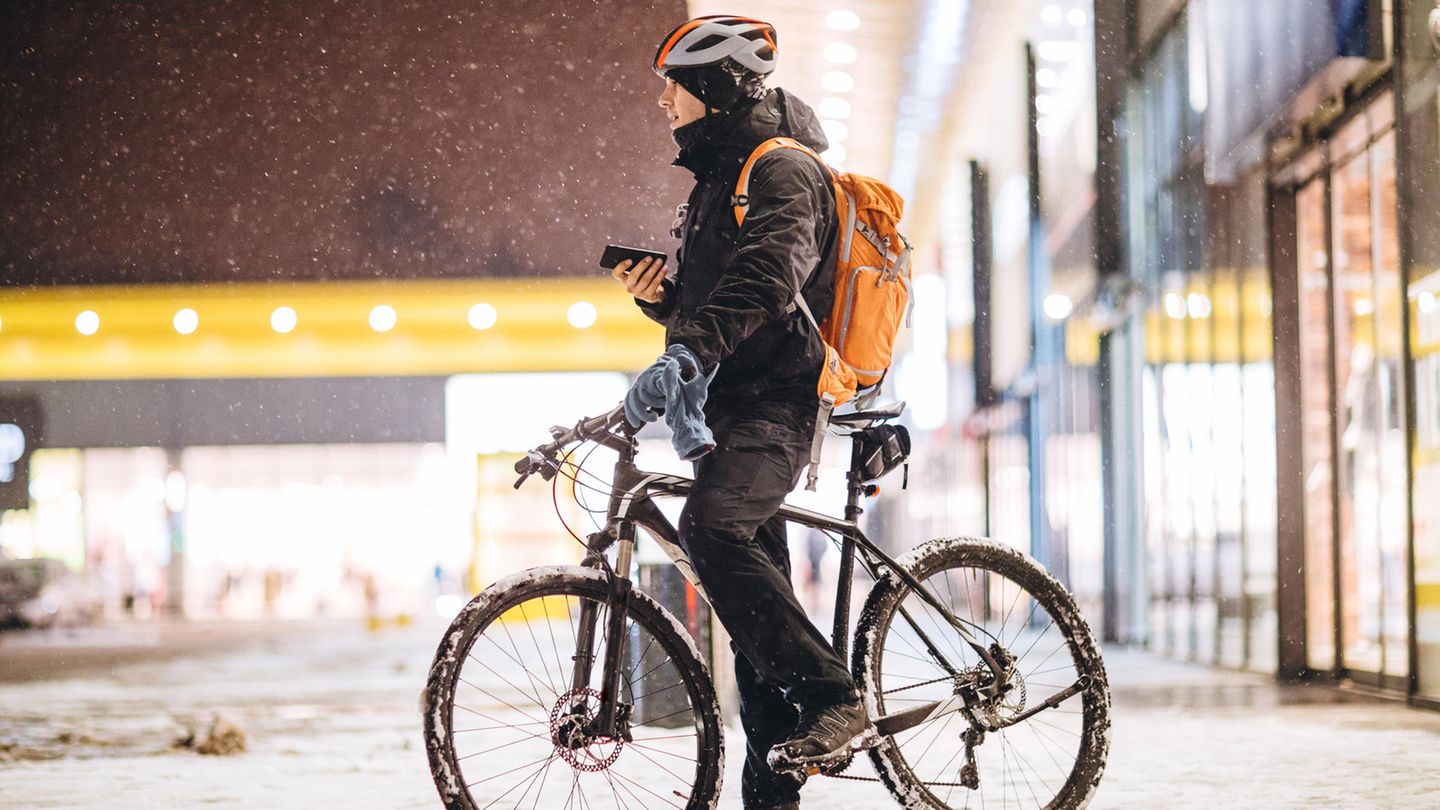Those who don’t mind the cold temperatures continue to ride their bikes in winter instead of using the car or public transport. Read here how to make your bike winter-proof, as well as tips on equipment and driving behavior.
With winter, cold, ice and snow often find their way onto German roads. If you defy the weather and want to continue riding your bike, you should check the bike for safety and roadworthiness. ADAC and ADFC give useful tips on cycling in winter. In the following, you will find out how you can also protect your bike from the cold and wet.
Protect the bike from the cold and wet
If you don’t have a cellar or other shelter for your bike, you have to make do with a place under the open sky in winter. To protect your bike from getting wet, you can use a use. The waterproof coating of the cover can also protect your bike from the rain outside of winter, making it worthwhile for all bike owners who do not have their own parking space to buy.
Choosing the right bicycle saddle can also be important in winter, because gel saddles can become rock hard at sub-zero temperatures. A coated and padded one is recommended that protects against moisture, cold and cracks.
Correct lighting
It gets light late and dark early, so in winter you need to make sure you have adequate lighting on your bike. This is not only important in terms of safety and visibility, but also to better see potential dangers in road traffic. If that doesn’t convince you: Good lighting is actually required by law. It is essential to have good headlights with white reflectors, a rear light and a red reflector. In addition, the wheel must have reflective strips on the front and rear tires or yellow reflectors in the front and rear wheel or reflective spoke sticks in all spokes and two yellow reflectors on each of the pedals. If you have an average bike with average light, buying a good front light for the winter can be worthwhile. This front light can be quickly mounted on the handlebar, for example, and should enable visibility of up to 120 meters. In this way you increase your own visibility in traffic and have a better perspective.
You shouldn’t underestimate the subject of dynamo in winter either. If you have a bicycle with a side-rotor dynamo, you should have it replaced with a hub dynamo in winter. Because side-running dynamos can slip on wet and cold tires so that the light does not work.
Better traction
There is no compulsory winter tire for bicycles in Germany, but optimizing bicycle tires can contribute to better grip in snow and slippery conditions. You should therefore ensure that the tires have a good, not worn profile. There is also the option of lowering the tire pressure very slightly to increase grip.
Weatherproof and light-colored clothing
The ADAC recommends breathable, rain-repellent and windproof clothing for cycling in winter. This includes:
- Bicycle helmet
- windproof hat
- gloves
- breathable functional underwear
- Overshoes
- reflective safety vest
Cycling in winter: tips from the ADFC
The tips of the ADFC (General German Bicycle Club) with regard to driving behavior can also contribute to your safety:
- keep distance
- Reduce the pace
- Do not pedal or brake in bends, especially when the snow cover is solid and slippery
- if braking cannot be avoided, brake early and carefully
- Avoid steering movements on black ice and roll out without braking
- More grip on the road: lower the air pressure in the tires a little
- Lower the saddle for better traction
Sources: ,
You might also be interested in:
This article contains so-called affiliate links. Further information are available here.
I am a 24-year-old writer and journalist who has been working in the news industry for the past two years. I write primarily about market news, so if you’re looking for insights into what’s going on in the stock market or economic indicators, you’ve come to the right place. I also dabble in writing articles on lifestyle trends and pop culture news.




